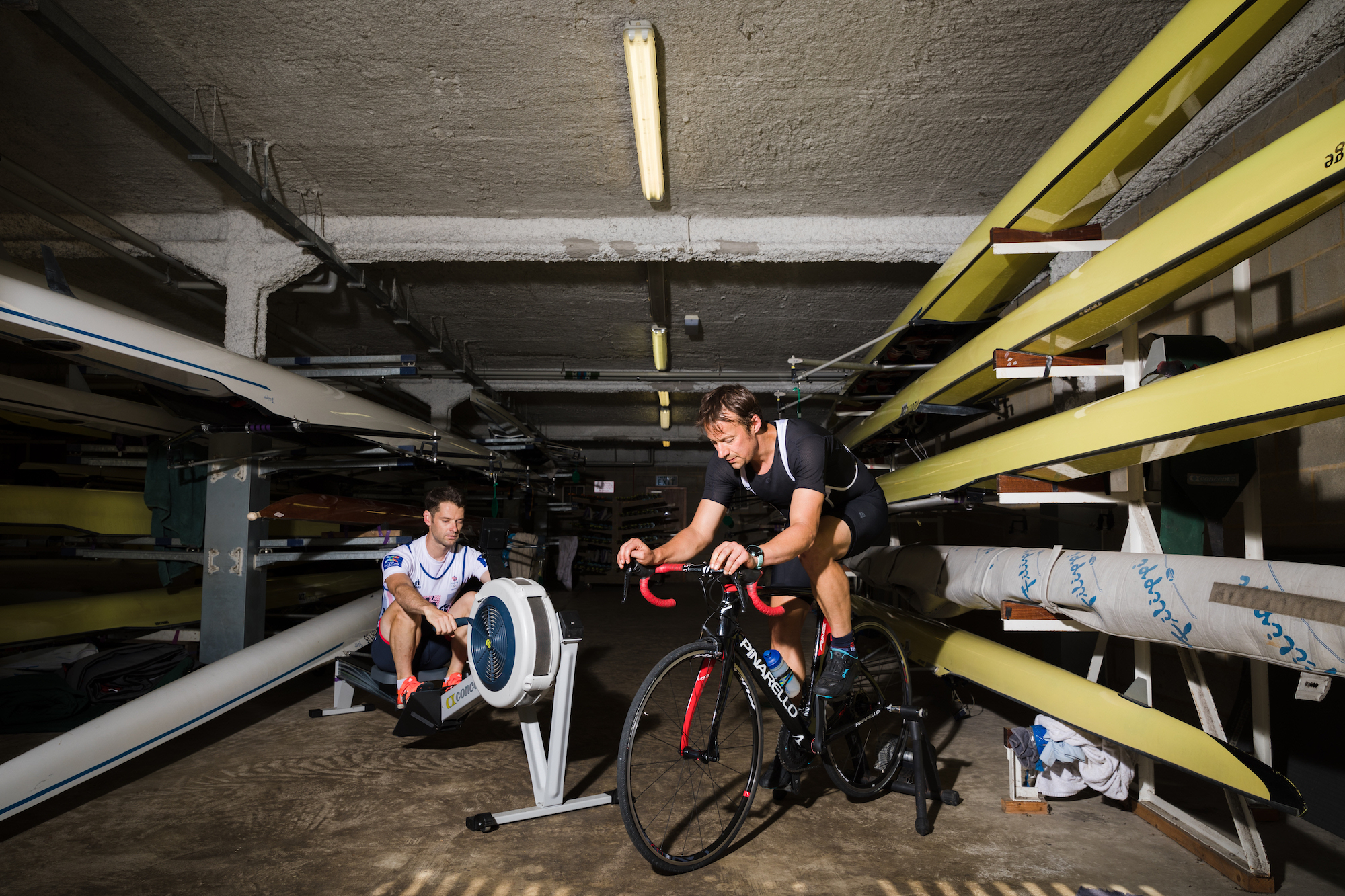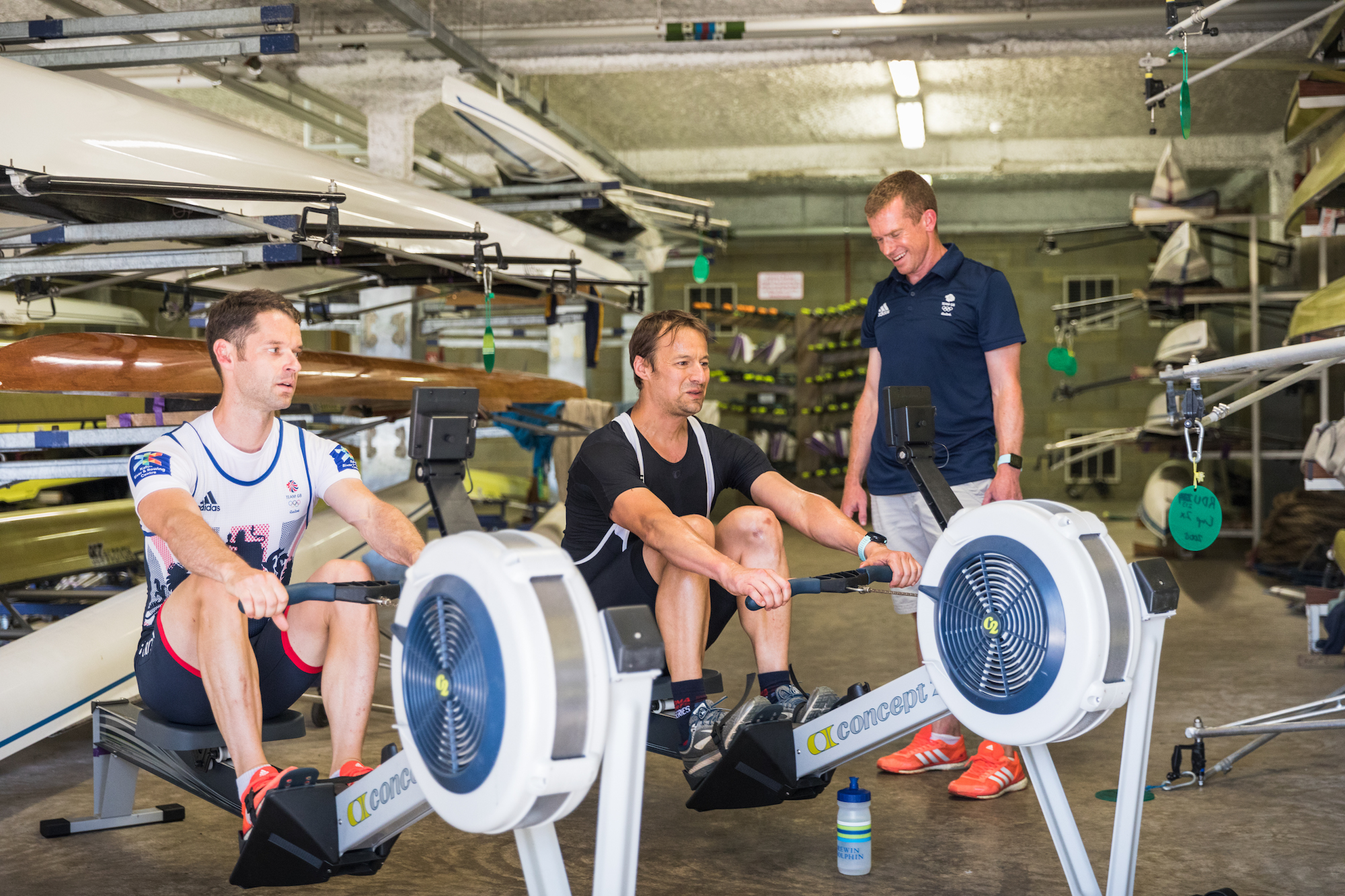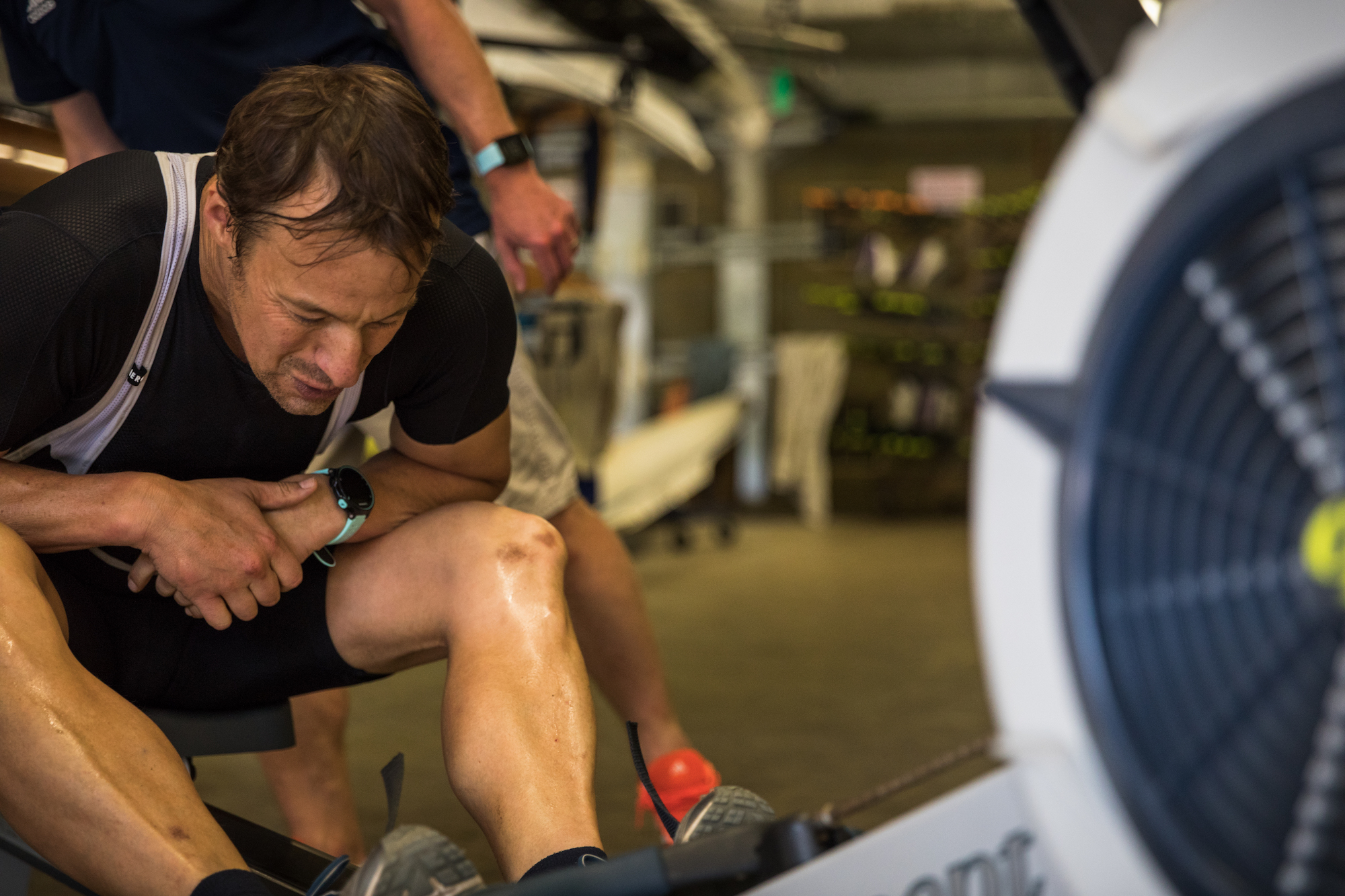Why do so many elite cyclists have a background in rowing?
And what can we learn from the way rowers train? Former head of high performance at British Rowing Mark Homer offers his expert guidance

(Daniel Gould)
The opportunities to excel in more than one sport are few and far between, and in this age of increased professionalism and specialisation, such chances are becoming rarer. But there is one sporting switch that seems to be eminently possible and, in many cases, extremely successful. A swelling number of elite athletes are making the switch from rowing to cycling. The question is, why? What makes rowing and cycling apparently so complementary?
Male and female athletes alike have transitioned from boat to bike very successfully, suggesting that years spent rowing can contribute to cycling excellence. Having worked as an exercise physiologist at British Rowing for 12 years, I have a solid understanding of rowing — and now I want to find out why being good with a pair of oars can equip you well for a career in the saddle, supporting or even enhancing your cycling performance.
Hamish Bond’s national velodrome 4,000m pursuit record and gold medal, following his switch from time trialling (he won TT bronze at the 2018 Gold Coast Commonwealth Games) to the track, was another exciting twist in the double Olympic rowing champion’s athletic career. Previously half of New Zealand's dominant men’s coxless pair — undefeated for eight years — the 32-year old has now decided to return to the boat in an attempt to qualify for the Tokyo Olympics.
Bond is not the only example of the successful rowing-to-cycling transition at the highest level. After winning a silver medal at the Athens 2004 Olympics and World Championship gold the following year in the women’s quadruple sculling event, Rebecca Romero won the individual pursuit cycling title at the Beijing Games in 2008.
With rowing events always taking place during the first week of the Olympics, rowers can spend the second week soaking up the atmosphere and enjoying other sports as spectators. It was here Romero was reintroduced to cycling. “The atmosphere in the velodrome was wild,” she recalls watching Bradley Wiggins race in 2004. “A contact of my [now] husband suggested I would be good at the pursuit.”
>>> Subscriptions deals for Cycling Weekly magazine
What happened next?
Get The Leadout Newsletter
The latest race content, interviews, features, reviews and expert buying guides, direct to your inbox!
“Following the 2005 rowing World Championships, I was out of the boat with a long-standing back injury, and I’d fallen out of love with the sport so I made the decision to leave rowing.”
British Cycling got wind of Romero’s interest in track cycling, and the coach tasked with developing a women’s squad for the Beijing Games called her and invited her to Manchester to get tested — the rest is history.
Other talent transfers include Olympic silver medallists Chris Bartley and Katie Greaves who ride for the Athlete Services Test Team; Rosamund Bradbury who sculled at the London 2012 Olympics and recently won the inaugural British Cycling Zwift eRacing Championships (and her brother Edmund, who rowed at Cambridge, now rides for JLT-Condor). An honorary mention too, to Cycling Weekly’s own Michael Hutchinson, who competed as a lightweight rower while studying. Some coaches have also made the crossover, with Team Sky coach Tim Kerrison competing and coaching rowing in his pre-cycling days. Of course, we can’t ignore the high-profile attempt by Wiggins to make the switch: he finished 21st at the 2017 British Rowing Indoor Championships. However, Wiggins abandoned the idea of rowing in Tokyo, citing other commitments.

All of this evidence points towards the possibility that rowing is a good background for a cyclist — and the follow-on suggestion that it might be an effective cross-training activity. Are there lessons that cyclists can learn from rowing? And could adding rowing to your training help improve your cycling?
Why do rowers make good riders? First up, physiology. Rowing is classified as a strength-endurance sport, and rowers, like cyclists, possess some of the highest aerobic capacities in elite sport. Absolute VO2max values as high as seven litres per minute are not unusual. Adjusted for weight, the values are less impressive, naturally — rowers are relatively heavy. Being heavier doesn’t much matter in rowing — you’re fighting the drag of water, not gravity. Lightweight rowers with VO2max values in close to 80ml/kg/min are not uncommon. The high-volume nature of training to improve aerobic capacity prepares rowers well for the rigours of cycling.
Having to overcome water resistance, and needing the ability to ‘change gear’ during a race, rowers must be powerful. Whoever can complete 240 power-clean repetitions with the most weight will win. This highlights the high-strength demands of the sport. Training for track cycling is similar — with time spent in the gym alongside high mileage on the road and intensity work on the track.
Only lightweight rowers have a realistic chance of making a successful switch to road cycling. With a maximum weight of 70kg for men and 57kg for women, these athletes are trained to produce high power outputs from relatively low body weight. Australian Cameron Wurf rowed lightweight at Athens 2004 before riding for the Cannondale road team, then switching to triathlon [and spend the past season riding with Team Ineos]. Chris Bartley retired from rowing in 2016, having won silver at London 2012 in the Lightweight Men’s coxless four — and last year he finished second in the British 25-mile TT championships.
Development and technique
The main reason why rowers find the switch to cycling more straightforward than vice versa is the technical demands of the sport. I mentioned the 240-repetition power-clean demand, but that was too simple. Imagine having to execute that set of repetitions on the deck of a wobbling boat, balancing a loaded tea tray on either end of the weights bar, synchronised with up to seven team-mates. Balance, timing, and ‘feel’, among other factors, require several years of dedicated practice — but can be picked up surprisingly quickly.
Rowing has a unique development pathway: while many rowers learn at school or as youths within the club system, many — including several Olympic champions — came to the sport as adults, taking up the sport at university. Double Olympic champion Helen Glover started rowing in 2008 aged 22 and in 2012 became one of the first British women to win an Olympic rowing gold medal. Glover competed at football, hockey and cross-country running before rowing but was considered highly ‘coachable’ and ‘trainable’ in her early rowing days.

Romero likewise competed in several different sports before finding rowing. A varied, multi-skilled background may make it possible for rowers to quickly apply their fitness to a new sport. Cyclists tend to be purists, spending many years solely riding their bikes. Rowers seem to be better equipped to transfer their skills.
Rowing training at elite level is very different from cycling training. Cycling is low-impact and a low-force/high-cadence exercise, so high-volume training is essential. Rowers have to overcome greater resistance in water, absorbed by the back, ribs and forearms. While textbook form and technique will reduce the risk of injury, fatigue and loss of form are hazardous. Hence, rowers rarely train for longer than two hours (including the occasional rest). Rowing training is supplemented with non-specific cross training — and cycling is the number one choice. Many national programmes include a weekly low-intensity long bike ride and winter training camps.
Can rowing boost cycling?
The successful transition of rowers into track cycling suggests that rowing training may have some tricks to offer to cyclists. Despite the relatively short event distance and times, rowing training has evolved to comprise high volumes of low-intensity training, combined with short, sharp intensity, roughly following an 80:20 polarised intensity distribution. International-level rowers train approximately 20-25 hours per week and clock 5,000-6,000km per season. Over the course of a four-year Olympiad, this equates to approximately 7,600 strokes in training for every single stroke of an Olympic final!
The unavoidably flat nature of lakes and rivers is comparable to the velodrome: it is consistent, and effort can be precisely measured (weather conditions aside). Rowers, therefore, programme training sessions with clear single training zone targets. Long steady-state rowing or ergometer sessions are the norm in international squads, with a tight range of intensity based on heart rate or blood lactate responses.
Whereas cyclists often include multiple efforts of different zones of work within a single training ride, rowing programmes timetable up to four shorter
In-your-face stats: there’s nowhere to hide on the indoor rower sessions in a day (including resistance training and core stability). The intensity-based ‘race-preparation’ sessions include isolated efforts to ensure quality.
The strength-endurance demands within rowing performance requires athletes to complete up to three weight training sessions per week, particularly during the winter months. Making improvements in strength and power alongside endurance is difficult, owing to the ‘interference effect’, where gains in strength are lessened by endurance work. Rowing coaches alleviate this by programming resistance training as the final session of a given day, to maximise strength adaptations.
Correct nutrition helps to maximise the effect of such strength training with emphasis placed on protein intake before, during and after such sessions. While strength training for track cycling is well established, and its use for road athletes is increasing, most cyclists would benefit from more weight training to improve their economy, with corresponding improvements in nutrition. Rowers are famous for their high-calorie intake. While macronutrient status has little effect on a six- to eight-minute race, meeting the demands of high-volume preparation means consuming up to 6,000kcal per day. As covered in these pages, many cyclists under-fuel in an attempt to lose weight and stay lean, putting their bone health at risk. Core stability is also critical to maintaining good form and effective rowing. Rowing places high force through the trunk, and common injuries include lumbar spine and rib problems, often caused by poor stability. Producing power on a bike requires a stable base too, so this is another way in which cyclists could benefit from training more like rowers.

As we have seen, rowers tend to switch quite easily to cycling because they’ve already been used to cycling as a cross-training activity. Cross-training is highly valued in many endurance sports but is often neglected in cycling. Of course, cycling is low-impact and relatively non-intense, so cross-training might not seem vital, but mixing things up can have a powerful effect.
Will doing some rowing help your riding?
It’s tempting to keep your training specific and only ever train on the bike — but you might be missing out with many clubs offering taster sessions. The technical nature of the sport takes time to develop, and it is difficult to register meaningful physical training during this time. A quicker and more convenient solution is indoor rowing. The stability and reduced technical demands mean you are quickly rewarded for your efforts and, in short, yes — there may be some advantages to including some rowing in your training programme.
>>> Cycling Weekly is available on your Smart phone, tablet and desktop
Rowing is a whole-body exercise, so with correct technique, your legs, trunk and arms are subjected to an aerobic training stimulus. The quads, glutes and hamstrings should contribute the most to each stroke. If your training is mostly cycling, there is no harm in taking some of the pressure off the well-used muscle groups and involving the upper body too. Keeping the resistance low will allow more of a low-force/high-cadence approach, targeting the cardiovascular system rather than strength.
Dr Nicky Keay, who has published several studies investigating bone density in athletes, believes rowing is an excellent spine-loading exercise for those at risk of low bone density, whether through past under-fuelling or the lack of weight-bearing from cycling alone.
As previously mentioned, rowers need a strong and stable core, and good rowing drills and sequencing should enable you to sit stronger on your saddle too. It is easy to lose shape, but with a constant reminder of your split and effort on the screen on a rowing machine, the influence of technique on speed is clear. You can work hard, but a weak position will mean you leak power and quickly slow down.
Finally, rowing provides an experience that cycling cannot: a level of teamwork rarely called for in cycling. I am told the feeling of team cohesion and rhythm when you are part of a crew moving a single hull in perfect synchronicity is unbeatable. Like a team time trial without the option of losing a man, the whole really is greater than the sum of its parts.
This feature originally appeared in the print edition of Cycling Weekly, on sale in newsagents and supermarkets, priced £3.25.

Thank you for reading 20 articles this month* Join now for unlimited access
Enjoy your first month for just £1 / $1 / €1
*Read 5 free articles per month without a subscription

Join now for unlimited access
Try first month for just £1 / $1 / €1
Founded in 1891, Cycling Weekly and its team of expert journalists brings cyclists in-depth reviews, extensive coverage of both professional and domestic racing, as well as fitness advice and 'brew a cuppa and put your feet up' features. Cycling Weekly serves its audience across a range of platforms, from good old-fashioned print to online journalism, and video.
-
 Gear up for your best summer of riding – Balfe's Bikes has up to 54% off Bontrager shoes, helmets, lights and much more
Gear up for your best summer of riding – Balfe's Bikes has up to 54% off Bontrager shoes, helmets, lights and much moreSupported It's not just Bontrager, Balfe's has a huge selection of discounted kit from the best cycling brands including Trek, Specialized, Giant and Castelli all with big reductions
By Paul Brett
-
 7-Eleven returns to the peloton for one day only at Liège-Bastogne-Liège
7-Eleven returns to the peloton for one day only at Liège-Bastogne-LiègeUno-X Mobility to rebrand as 7-Eleven for Sunday's Monument to pay tribute to iconic American team from the 1980s
By Tom Thewlis